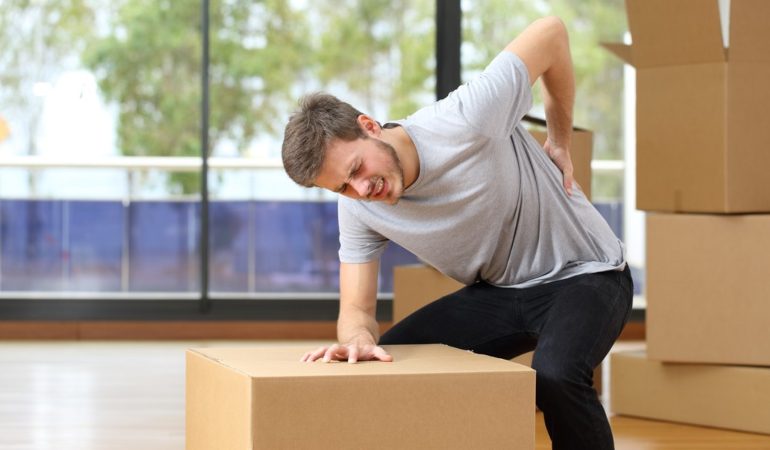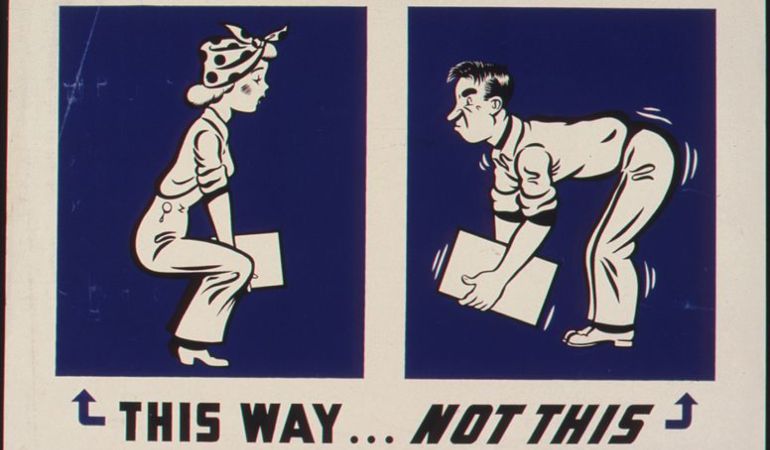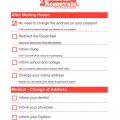
Every now and then, life puts us in a situation where we must lift heavy objects that weigh more than the human body can endure.
This leads to an endless list of serious potential injuries. Luckily, a correct way to handle weighty items exists, so we could harmlessly do our job or at least reduce the risk of trauma to a minimum. By following proper lifting techniques, you can rearrange, clean or move house without any trouble.
Table of Contents
How to lift heavy objects by yourself
With Fantastic Removals’ easy guide, you’ll know the proper techniques to lift heavy objects even when alone.
- Examine the item you’re about to move
Size doesn’t mean everything. Take some time to check if the load is too heavy and look for comfortable pick up spots. The latter will significantly decrease the chance of you getting hurt. Is the object well balanced? If you’re lifting boxes, is there a risk of something falling off due to cracks or other weak spots? Don’t forget – there’s no shame in asking for help. - Check your surroundings and choose a safe route
Clear any obstacles that stand in your way to avoid tripping and be mindful of stairs and uneven floors. - Get into position
The key lies in preparation and, in our case – a proper stance. Make sure your feet are shoulder-width apart. Keep your back straight, tighten your abdominal muscles, bend your knees, squat down to the floor and look straight ahead. If needed, put one knee on the floor and your other knee in front of you bent at a right angle (like a knight). Get a good grasp of the load with both hands and get ready for lifting. - Lift & Carry
Keep the item close to your body and use your leg muscles to stand up and lift the load off the floor. Your back should remain straight throughout the process. Use slow and smooth moves and do not twist your body when moving the object. Use your feet to change direction and take small steps. Lead with your hips as you change direction. As you move, keep your shoulders in line with your hips. - Drop the load
Once you have reached your destination and it’s time to put the object down, return to the squatting position, using only your leg muscles (not back). Keep your back straight, hold the item close to your body and set it down gently as you reach the ground (or another surface).
Note: Do not attempt to move a piano or objects of similar size alone. Items this big require at least 2 or 3 people. Often, only professional movers from a reliable removal company can move objects as heavy as this.
How to lift heavy objects with pulleys
Pulleys are the best form of help you can get when it comes to lifting heavy objects. They’re a system of one or more wheels with a looped rope around them that uses the laws of physics to distribute weight and make it easier to lift and are widely used when people move out and change the address.
- Gather the materials for your system
To make your own pulleys system, you need, at least one pulley, lifting slings, rope, working gloves, barricades. - Estimate the load of your heavy object
As a safety precaution, you need to get lifting straps needed for more than twice the object’s weight. Doesn’t matter if you’re moving home or there’s an object that has to be lifted for a different purpose. - Attach the lifting straps to the object
Make sure it’s well rigged and won’t slip off. - Calculate the number of pulleys required
The more pulleys, the easier for you (just more attachments needed). The velocity decreases and the mechanical advantage increases with each new pulley. - Place the top pulley above the object’s final destination
This way, it will swing there by itself. Make sure there’s nice open space around the trajectory just in case. - Test the load
If one pulley is not enough for you to push the system into gear, you might need a few more.
How to lift heavy objects upstairs (and down)
As we’ve shared in other moving tips blog articles, pulleys are the best way to lift heavy objects upstairs, but if you don’t have the equipment and instead have a hand truck, here’s what to do.
- Slide the downside under your heavy object
- Strap the object securely to the side of the hand truck, and test just in case it’s well stabilized
- Tilt the hand truck and balance the weight on the wheels
- Walk backwards when going upstairs
- Walk forward when going downstairs
Proper posture when lifting weights

- Position the heavy object in front of your feet.
- Keep a wide base of support, having a distance of at least 50 cm between your feet. The closer they are to one another, the harder it gets to keep balance
- Squat properly to reach the object below. Keep your back straight by pushing your chest forward. Bend the knees but don’t extend them too forward
- Grip the heavy item firmly, without applying excessive amounts of force as that may cause slipperiness
- Keep your posture straight by looking forward, not below
- Keep your elbows as close as possible to your body
- Do not twist your waist when lifting an object
- Push with the legs, while keeping arms straight, only slightly bend in the elbows
- Do not bend your back, keep your chest up while lifting
- Constantly hold the heavy object as close to your body as possible
- Move slowly without bending backwards. If the weight is heavier it may cause you to fall backward
- When you are about to drop off the weight, start with the legs until you get into a squatting position, then slowly loosen your grip so the object touches the ground slowly at each end
- Do not drop it off from a distance or throw it down from a standing position
Read more about what kinetic lifting is.
Conclusion: General heavy-lifting advice
We hope that you found this article useful and that you will make sure to follow the safety tips we’ve listed here. Don’t forget that packing and moving your home isn’t as easy as it sounds. If you’re about to move for the first time and think you can spare a couple of bucks on a moving service, at least make sure you don’t injure yourself in the process.
Mind that preparing for international moving takes more time, and the risk of getting an injury from the improper lifting of heavy items is higher.
To sum up the main tips on how to lift heavy objects:
- Never lift an item by bending over
- Never lift an object above shoulder level
- Stretching your legs and back helps your body warm-up for the task
- Do not lift super heavy items by yourself, call friends for help
- Find and use a dolly
- Use working gloves all the time
- Do not rely entirely on back belts for protection, it’s not guaranteed
No need to risk lifting heavy objects by yourself. You can always leave that to the experts!
Enter your postcode to view our rates and availability in your area.
For questions about the services we offer visit our main site or you can always call us at 020 3746 0584


 (6 votes, 86.67 % )
(6 votes, 86.67 % )











